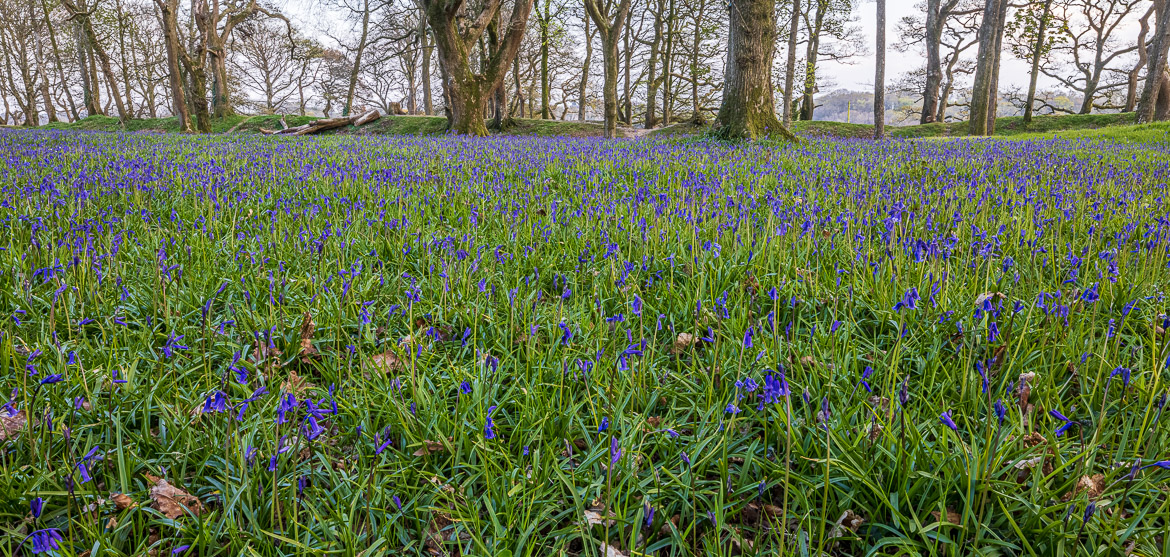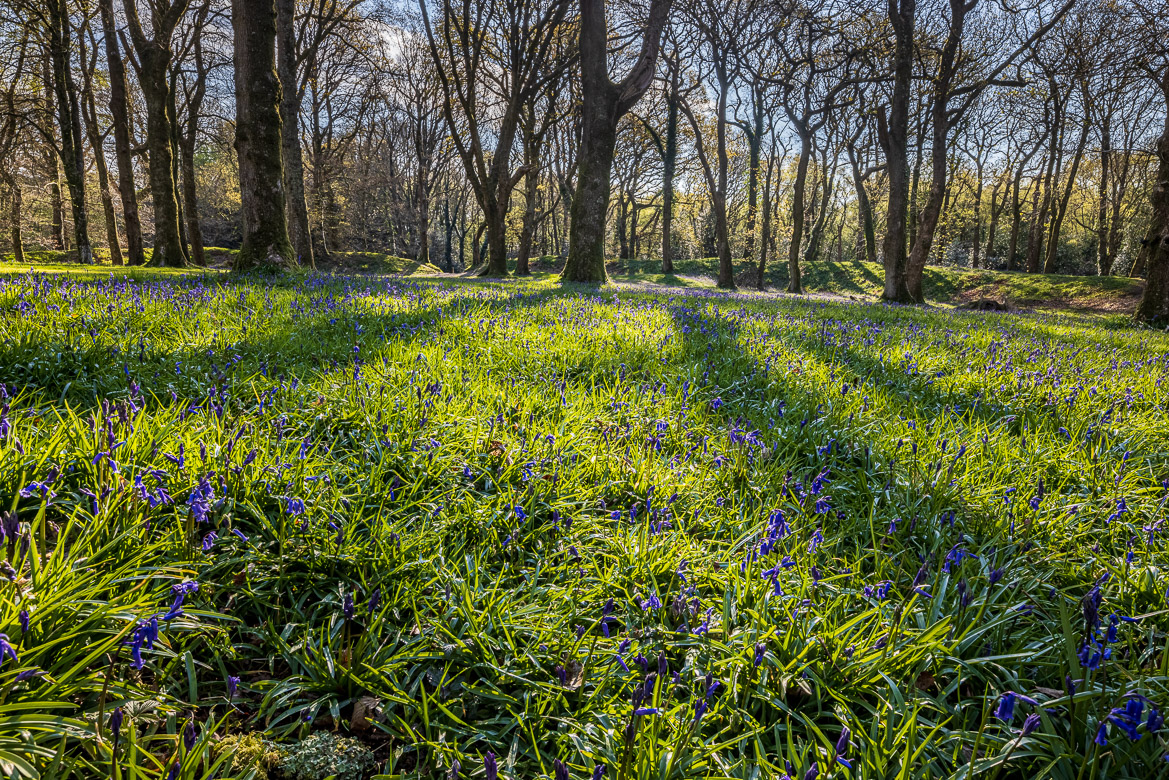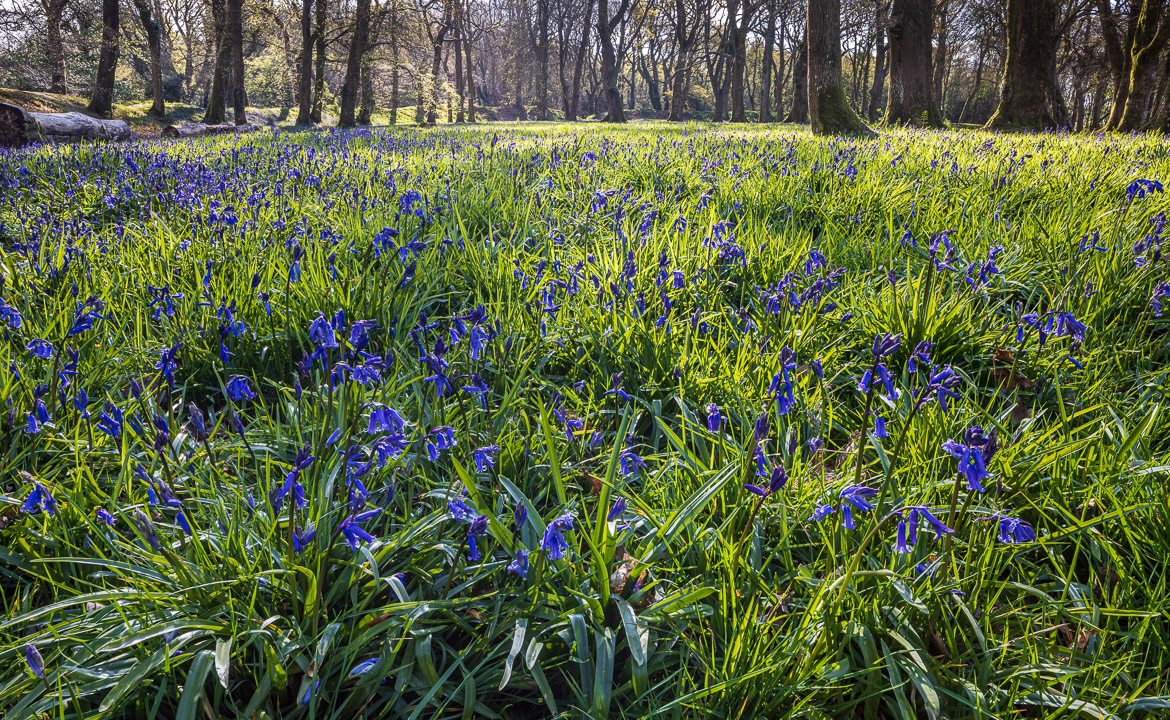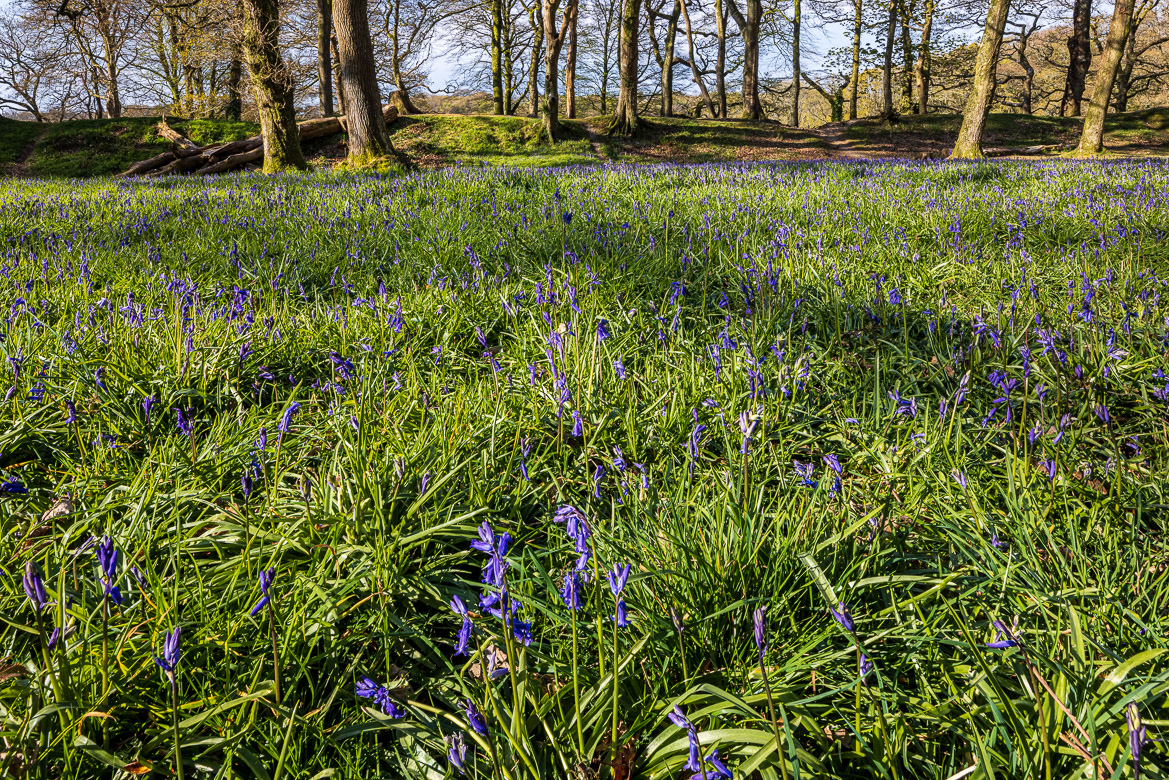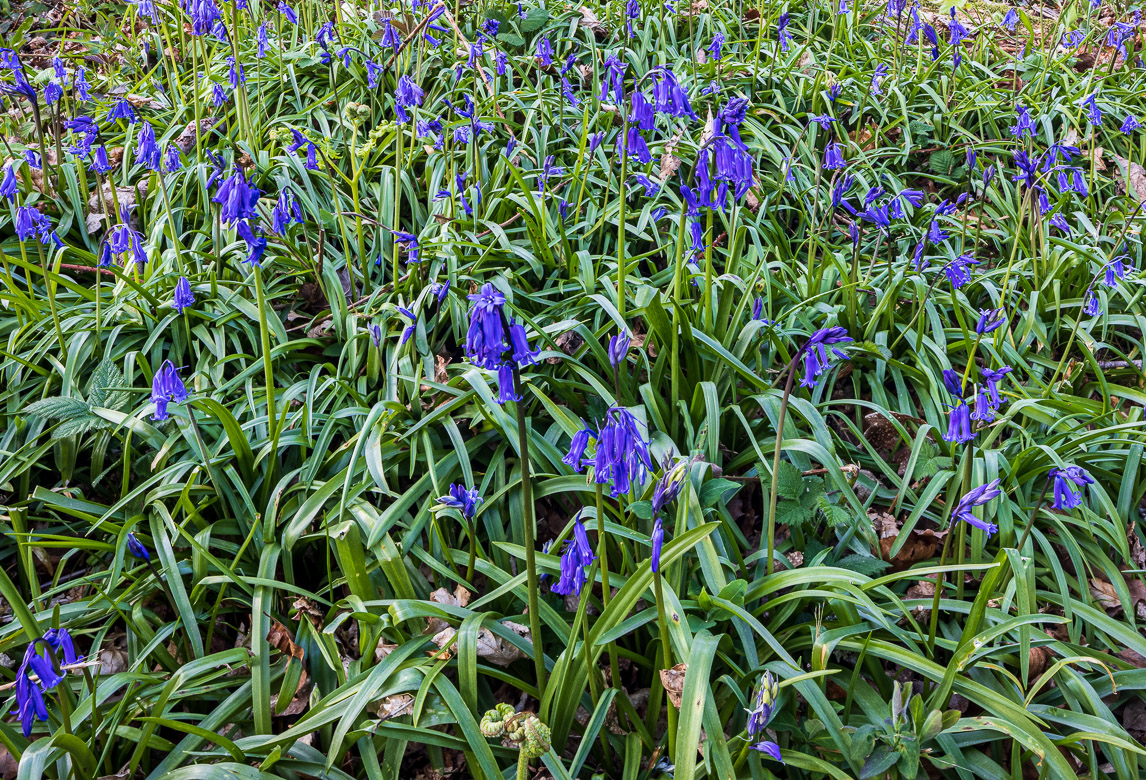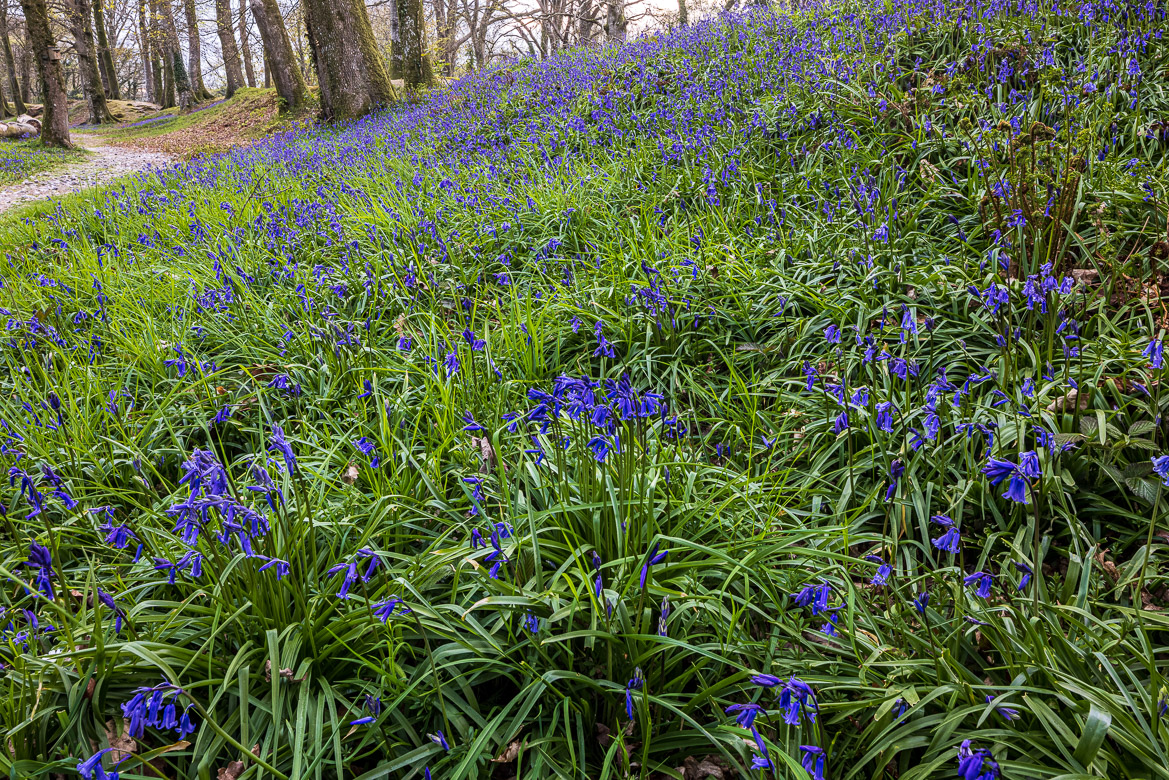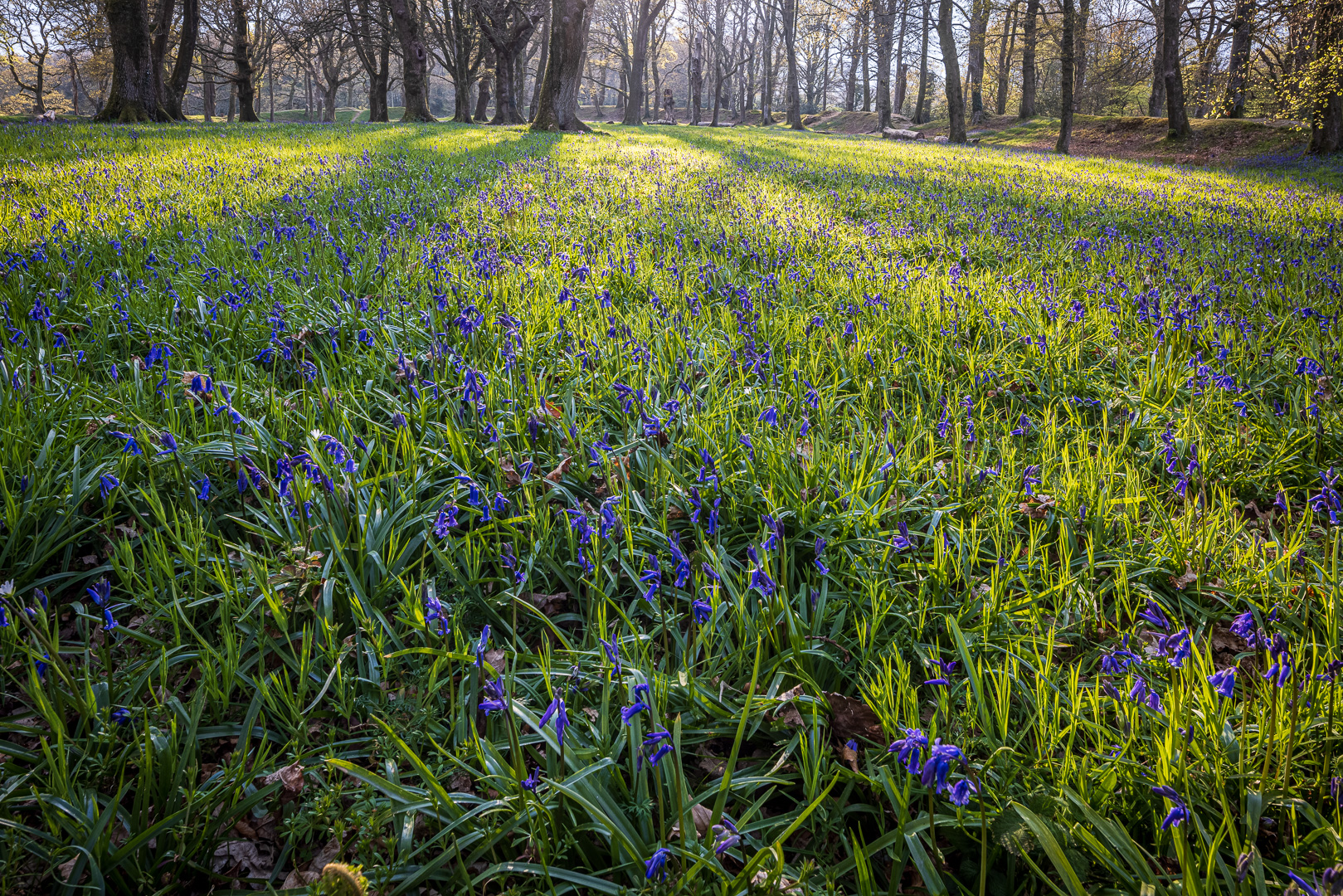
When Britain got colder at the end of the Bronze Age people moved away from the Moor and settled at lower land. At the beginning of the Iron Age from around 700 BC hill forts appears around Dartmoor and on other places in Devon and Cornwall. Blackbury Camp east of Ottery St Mary is such an example of a Hill Fort although as a defensive construction it doesn’t look very impressive. Here at lower levels the soil was richer and the climate better than on the high moor.
Blackbury Camp is situated at an altitude of around 200 m and is oval with the longer sides measuring around 200 m as well and the width is around 100 m. The ramparts are around 5m high (seen from the outside) and 10 m wide. Excavations have revealed more than a thousand pebbles that were used for slingshots, confirming that Iron Age man was more violent that his predecessors, the Bronze Age man. Maybe life became tougher as the climate changed and forced a more aggressive (and defensive) behaviour.
But I went to Blackbury Camp not to admire the Iron Age fortifications but to admire the bluebells that cover the ground at this time of the year. So my photography is not so much to describe the ramparts protecting the Fort as it is to show the abundance of this shy little English blossom.
Bluebells Bluebells covering the earth mound protecting the Hill Fort
